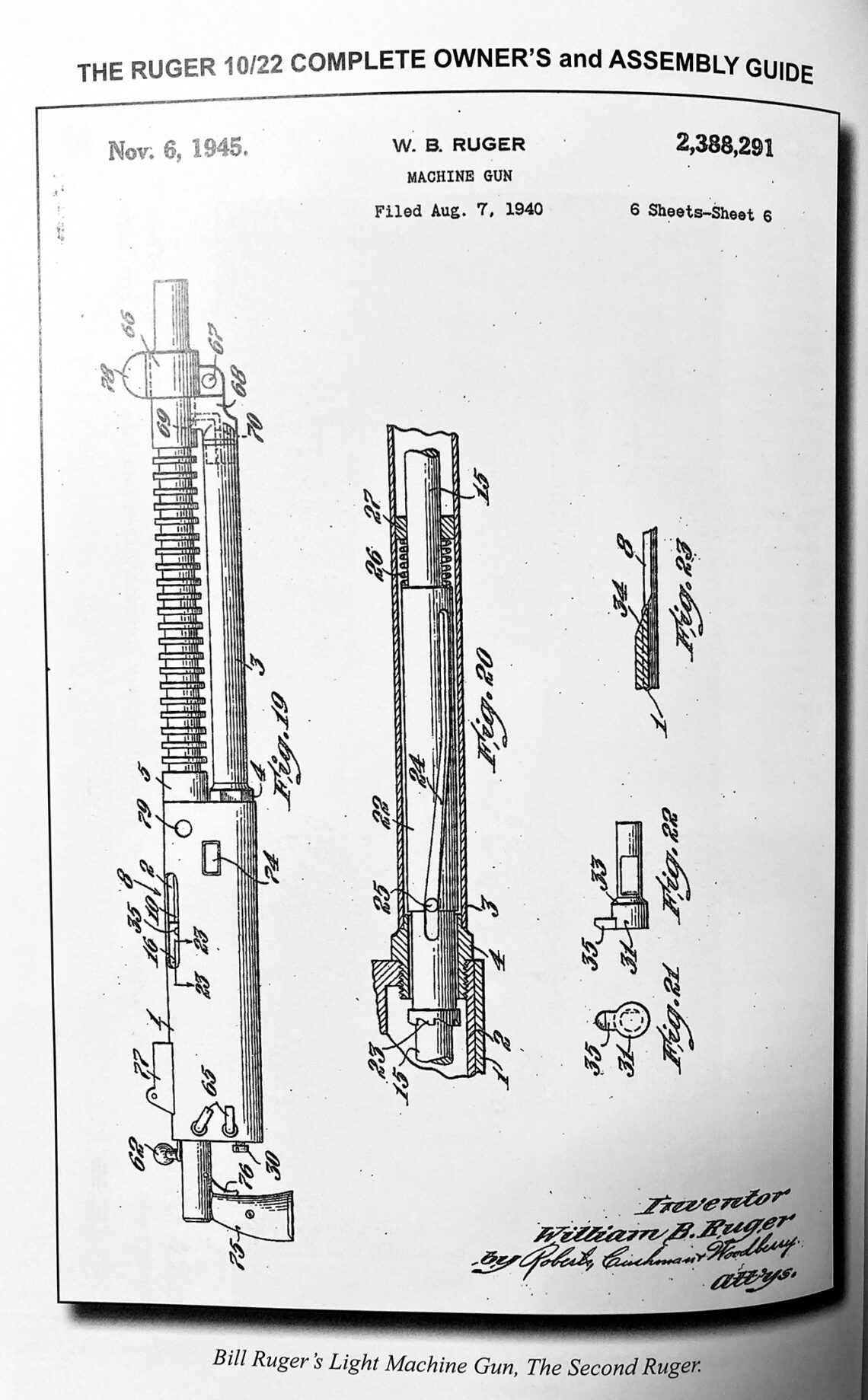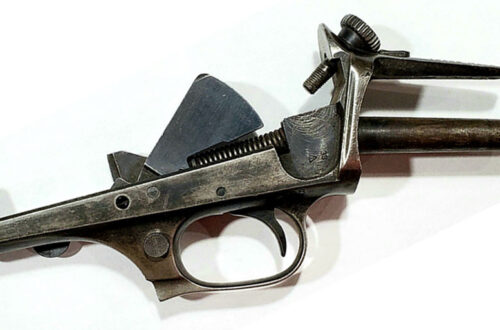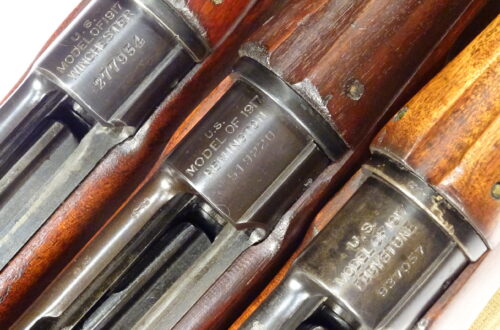
Ruger 10/22 – Ch. 1 History – Intro
HISTORY, pg. 5
The Sturm, Ruger Company
What has made the Ruger company one of the largest firearms manufacturers in the country? There are many factors, including fiscal conservatism; but if we were to sum it up in one word, that word would be: innovation. Bill Ruger began with innovation in manufacturing, building on the new ideas and techniques that stemmed from the crucible of World War Two. While the established firearms industry manufacturers resumed their manufacturing with long-standing processes and technologies, bolstered by the legacy lathes and mills left behind by WWII’s War Production Board, the audacious upstarts of the postwar firearms field were unbound by traditions of design or manufacturing. Bill Ruger was among the first to exploit the new manufacturing technologies.
But, Ruger the company is more than innovation in manufacturing; Ruger is also innovation in design. In his youth, Bill Ruger was fascinated by the mechanisms that were the heart of the firearms of the day. Winchester and Savage lever-actions held a particular fascination for him. After high school, during his two years of studies at the University of North Carolina-Chapel Hill, Bill began to develop his design for a gas-operated semi-automatic conversion of the Savage Model 99. One of his early jobs, with a firearms-oriented job shop, enabled him to complete his design and create a functioning, if imperfect, rifle. This Savage 250-3000 is indisputably Bill’s first firearm. From then on, he never stopped innovating. The result is the Ruger company that we know today.
William Batterman Ruger
Who was this man, Bill Ruger? William Batterman Ruger grew up in Brooklyn, New York when Brooklyn was a upper middle-class suburb of Manhattan with open country within an easy “el” ride. It was a time, the ’20’s and ’30’s, when hunting, shooting, marksmanship, and firearms themselves were viewed with respect rather than suspicion. In his early years Ruger developed an interest and affinity for the outdoors; guns and hunting were an integral part of that interest. His early work life gave him exposure not only to guns, but also how they were made. When Ruger completed his Savage-based prototype and took it and himself on the rounds of gun companies, unsuccessfully looking for a home, he ultimately found himself working at Springfield Armory for a relatively brief stint. While there, he had the opportunity to examine in detail many firearms designs, including one-of-a-kind examples and even John Grand’s early .276 prototype. This experience fueled both his curiosity and his imagination.
Feeling stifled by government bureaucracy at the Armory, Bill took his ideas and his prototype to Auto Ordnance, home of the Thompson Submachine Gun. At Auto Ordnance Ruger developed a lightweight machine gun of some real merit. Alas, the war ended before development of this promising weapon could be completed. A look inside the patent that Bill received for his design reveals a rotary belt feed with clear lineage to Schoenauer’s and Savage’s rotary magazine. We’ll see that rotary principle some time later in the Ruger 10/22 rifle. The Ruger Light Machine Gun is The Second Ruger.
The Ruger Corporation
Sturm, Ruger and Company, Inc. wasn’t Bill Ruger’s first company. When WWII ended and Auto-Ordnance’s business went south, he found a partner and set up a small manufacturing company, The Ruger Corporation. We must keep in mind that after the war, there was a huge pent-up demand for consumer goods of all kinds; wartime production had consumed the efforts of those firms that ordinarily supplied them. Auto-Ordnance, for example, began to make record players, of all things. Bill Ruger’s Ruger Corporation was a component supplier for that product effort. When a hardware wholesaler convinced Ruger and his partner to begin making woodworking tools, the result was a line of tools that failed in the market but that are now highly desired by Ruger collectors.
The letterhead of the Ruger Corporation included the intent to produce a semiautomatic pistol. However, Ruger’s partner was disinterested in pursuing that line of business. The Ruger Corporation eventually failed; its legacy, though, was the frame of Ruger’s hand drill, which bore a suspicious resemblance to the grip frame of the pistol that was to come. One wonders if Bill was circumventing his partner’s objections to firearms development by camouflaging his grip frame design as a drill handle. Or perhaps Bill developed this drill after buying out his partner. More importantly, both demonstrate the stamped and welded sheet metal construction that Bill Ruger brought to market. Ironically, it was the stamped and welded sheet metal M3 “Grease Gun” that put the Tommy Gun and Auto Ordnance out of business, leading Bill Ruger to set out on his own.
When we examine Ruger’s patent for the Standard Model Pistol, it’s pretty clear that he had at least initiated the design by the end of WWII. The patent application date was 5 November 1946; the Ruger Corporation was formed in 1946. But, with the failure of the Ruger Corporation, it seemed that Bill’s dream of producing a successful firearm design was dying.
Enter Alex Sturm
In 1949, the Ruger Corporation was in receivership; Bill Ruger was out of money. What he needed to bring his pistol to market was a miracle. Instead of a miracle, he met an “angel.” Alex Sturm was the scion of a prominent family in Connecticut, Sturm was an aesthete in the most positive sense of the word. He was an accomplished writer and artist, a latter-day Renaissance man. More importantly, perhaps, he came from money. Ruger and Sturm hit it off as friends, and formed a bond that survived a business partnership. Sturm was looking for investment opportunities, and decided that Ruger was worth a $50,000* roll of the dice. Make no mistake; both Sturm and Ruger were sufficiently clear-headed about their prospective business that the “roll of the dice” wasn’t a gamble. Perhaps not a sure thing, both believed they would make it work.
Sturm, the artist, was impressed by the aesthetics of the Standard Model Pistol de-sign; to him it evoked the classic Luger. Sturm brought the art as well as the money.
Get your copy of the Ruger 10/22 Complete Owner’s and Assembly Guide and read more!




